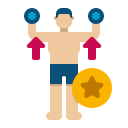End-Range Strength Sequences for Sustainable Flexibility
Shift side to side into skandasana, keeping one heel rooted as the other leg lengthens. Track the knee over toes and maintain a lifted chest. On the long leg, press the foot into the floor and gently pull toward center to activate adductors where they feel stretched. Lower for three counts, pause, and press up for two. This tempo blends strength through length and helps hips stay resilient.
End-Range Strength Sequences for Sustainable Flexibility
Begin in pyramid with blocks, hinge from hips, and keep a micro bend to protect knees. Exhale, shift weight forward, and actively lift the back leg using glutes, not momentum. Lower the leg slowly back to pyramid, keeping hips square. Repeat several cycles, exploring hamstring length while training posterior chain strength. The control you build here translates directly into more stable forward folds.


